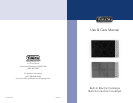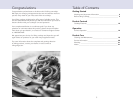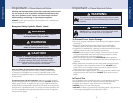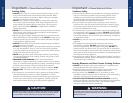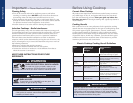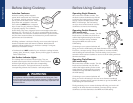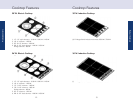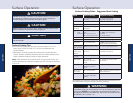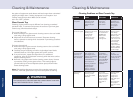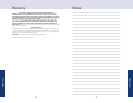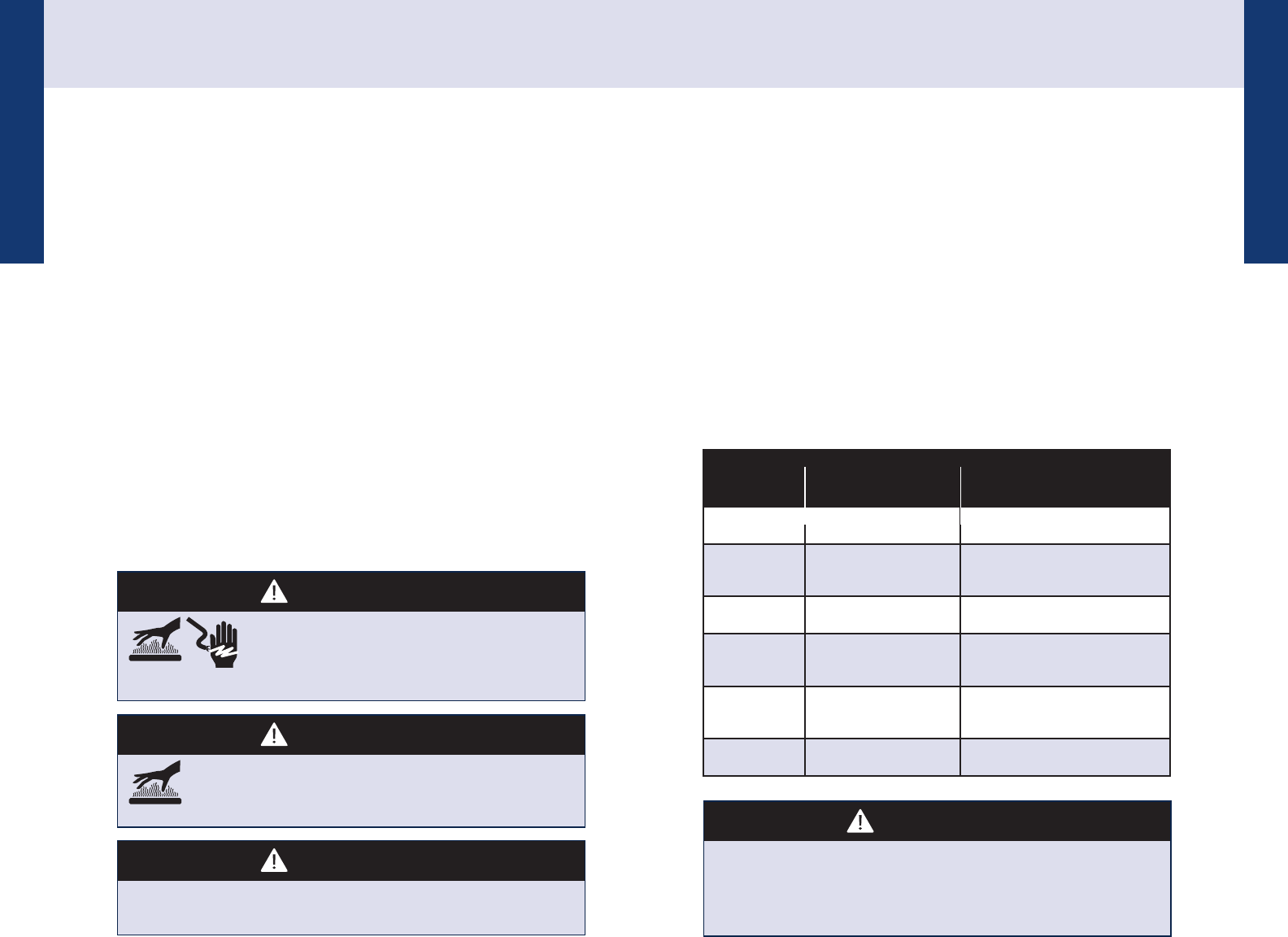
8 9
Getting Started
Getting Started
Before Using CooktopImportant – Please Read and Follow
Cleaning Safety
• Turn off all controls and wait for appliance parts to cool before
touching or cleaning them. DO NOT touch the surface elements or
surrounding areas until they have had sufficient time to cool.
• Clean appliance with caution. Use care to avoid steam burns if a wet
sponge or cloth is used to wipe spills on a hot surface. Some cleaners
can produce noxious fumes if applied to a hot surface.
• A steam cleaner is not to be used for cleaning this appliance.
Induction Cooktops – Radio Interference
This unit generates, uses, and can radiate radio frequency energy and,
if not installed and used in accordance with the instructions, may cause
harmful interference to radio communications. However, there is no
guarantee that interference will not occur in a particular installation.
If this unit does cause harmful interference to radio or television
reception, which can be determined by turning the unit off and on, the
user is encouraged to try to correct the interference by one or more of
the following measures:
• Reorient or relocate the receiving antenna
• Increase the distance between the unit and receiver
• Connect the unit into an outlet on a circuit different from that to
which the receiver is connected.
KEEP THESE INSTRUCTIONS FOR FUTURE
REFERENCE.
Ceramic Glass Cooktop
All products are wiped clean with solvents at the factory to remove
any visible signs of dirt, oil, and grease which may have remained
from the manufacturing process. Clean your glass top before the
first time you use it. A thorough cleaning with a glass top cleaner is
recommended.
Cooking Utensils
Each cook has his or her own preference for the particular cooking
utensils that are most appropriate for the type of cooking being done.
Only certain types of glass, glass/ceramic, ceramic, earthenware,
or other glazed utensils are suitable for glass cooktop use without
breaking due to the sudden change in temperature. This is a matter
of personal choice. As with any cookware, yours should be in good
condition and free from excessive dents on the bottom to provide
maximum performance and convenience.
Type Responses to
Temperature
Changes
Recommended
Usage
Aluminum Heats and cools quickly. Frying, braising, roasting. May
leave metal markings on glass.
Cast Iron Heats and cools slowly.
Not recommended.
Retains excessive heat and may
damage cooktop.
Copper,
Tin lined
Heats and cools quickly. Gourmet cooking, wine sauces,
egg dishes.
Enamel Ware Response depends on
base metal.
Not recommended.
Imperfections in enamel may
scratch cooktop.
Glass Ceramic Heats and cools slowly.
Not recommended.
Heats too slowly. Imperfections in
enamel may scratch cooktop.
Stainless Steel Heats and cools at
moderate rate.
Soups, sauces, vegetables,
general cooking.
Electric Cooktop Cooking Utensil Guidelines
WARNING
BURN OR ELECTRICAL SHOCK HAZARD
To avoid risk of injury or death, make sure all
controls are OFF and surface is COOL before
cleaning. Failure to do so can result in burns or electrical shock.
WARNING
BURN HAZARD
To avoid risk of injury, DO NOT touch the glass. The
cooktop will get hot during usage.
WARNING
If the surface is cracked, switch off the appliance to avoid the
possibility of electric shock.
WARNING
Stationary appliances not tted with means for disconnection from the
supply mains having a contact separation in all poles that provide full
disconnection under overvoltage category III, the insrtuctions shall
state that means for disconnection must be incorporated in the xed
wiring in accordance with the wiring rules.



